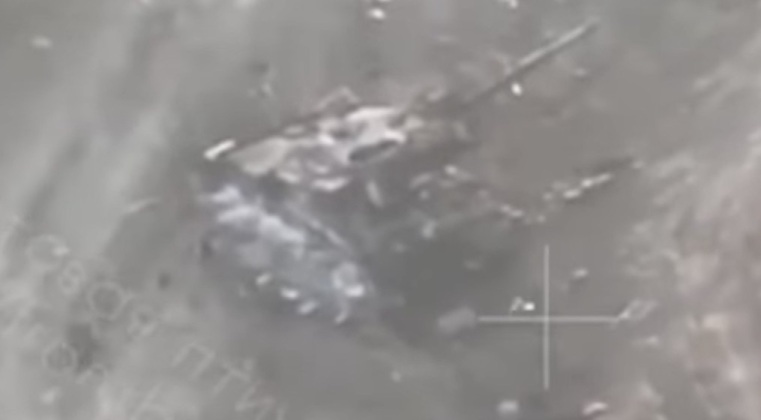News
Russia’s Kornet Missile Has Now Cracked All Major Western Bloc Tanks: Challenger 2 Kill Follows Abrams, Leopard 2 and Merkava IV

Following confirmation on September 5 that Russian forces had destroyed a British Challenger 2 tank in Ukraine, Russian sources have widely reported that the Kornet anti tank missile was responsible for the kill. The release of a video of the strike captured by a drone showed the tank being hit by a guided projectile, with the speed of the projectile undermining prior British claims that a Russian Lancet drone had been responsible. The video also effectively debunked claims that a direct hit by Russian artillery had destroyed the tank. Claims that the Kornet was used are consistent with the footage and the speed and trajectory of the projectile. This marks a major victory for the system, which is deployed primarily as a handheld platform but also at times mounted on light vehicles. The Kornet is a light 28kg handheld missile system which has been in service since 1998, and has gained kills against more modern tank classes than any other system of its kind.
Kornets were first used in combat during the U.S.-led invasion of Iraq in 2003, with Iraqi Republican Guard units thought to have obtained the missile systems through black market deals and in defiance of UN Security Council imposed arms embargoes. The missiles proved highly effective against American Abrams tanks and Bradley fighting vehicles. Kornets were used again three years later against Israeli Merkava tanks, including the enhanced Merkava IV variant, when deployed by Hezbollah in 2006, piercing the armour of at least two dozen tanks. Militias from the Islamic State terror group also used captured Kornets highly effectively to disable multiple Iraqi Army Abrams tanks from 2014, with some reports indicating that Kornets were also used by the militia to great effect against Turkish Leopard 2 tanks in Syria. A notable feature of the missile is its tandem-charge warhead, with two HEAT charges separated by its rocket motor allowing for the second charge’s focal length to be increased. This has the effect of significantly improving its penetrative capabilities. The particularly large size of the second warhead contributes to its survivability against countermeasures such as explosive reactive armour.

Enhanced variants of the Kornet have continued to be developed, most notably the extended range Kornet-EM which has automatic target tracking capabilities and more advanced countermeasures against explosive reactive armour. While little is known regarding the missile system’s use in Ukraine, Russian President Vladimir Putin in June praised its performance stating that there was a need for production of greater quantities. He at the time hailed Russian forces’ successes destroying large quantities of Ukrainian armour. Adding the Challenger 2 to the Leopard 2, the M1 Abrams and the Merkava IV, the Kornet has proven itself a highly capable missile despite its lack of ‘fire and forget’ capabilities as seen on rivals like the American Javelin and Chinese HJ-12. With the Merkava reportedly set to be exported by Israel in very considerable numbers to at least one NATO member state, this is highly relevant to the survivability of Western Bloc armour in the event of a potential escalation of hostilities with Russian forces.

After being hit the Ukrainian Challenger 2 was seen emitting a large plume of smoke which appeared to trigger a fire onboard, with the tank’s lack of blowout panels contributing to an internal explosion which destroyed the turret. This was similar to the internal explosions which have destroyed many of Russia and Ukraine’s older Soviet built tanks due to their similar lack of sufficient measures to separate ammunition. With the Challenger 2 being among the most heavily armoured tanks in the Western world, and having been taken directly from British Army stockpiles meaning they did not have downgraded armour as American-supplied Abrams tanks will, the ability of the Kornet to neutralise the vehicles so completely is expected to be cause for significant concern among NATO member states. The Kornet itself has penetrative capabilities which are far from the foremost in the Russian arsenal, with the new much heavier Vikhr-1 launched by Ka-52 attack helicopters posing a much greater threat to heavy armour and likely capable of comfortably penetrating the Challenger 2 frontally.












